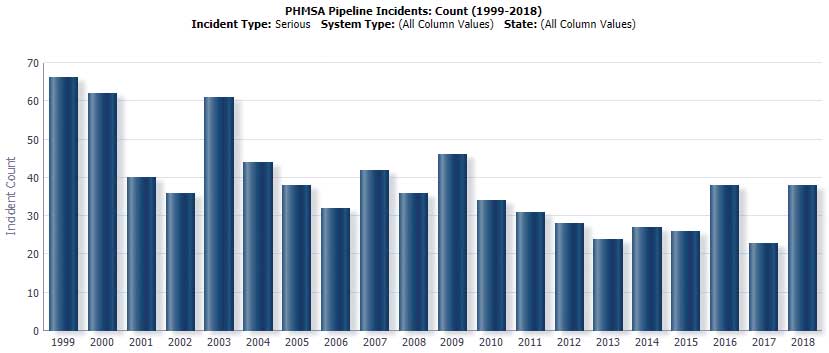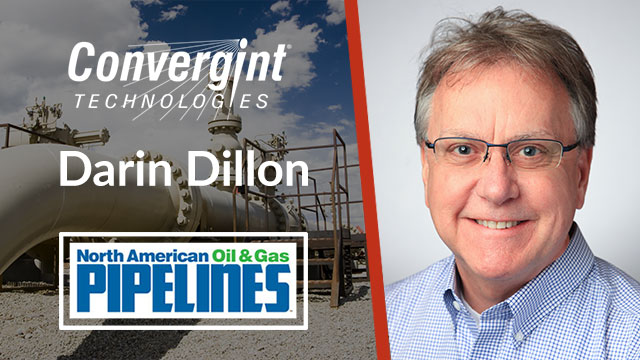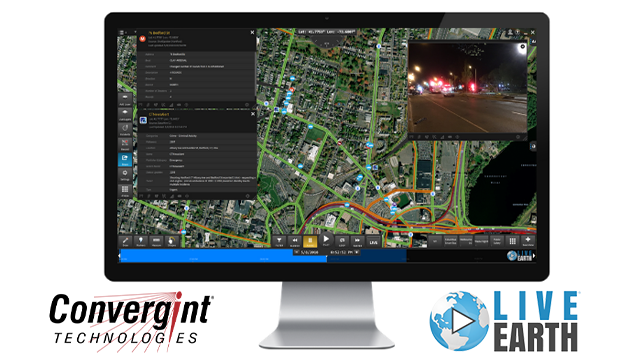Over the last few years, U.S. government agencies have been becoming increasingly more concerned about security risks surrounding thousands of oil and gas pipelines. These concerns, associated with traditional, as well as new, threats related to energy transportation have led to new government guidelines and regulations.
In the article published by North American Oil & Gas Pipelines, Darin Dillon, Convergint’s Energy Principal, discusses the implications of the new policies for national oil and gas companies. Darin also talks about Convergint solutions that can help strengthen the security of pipelines and meet government regulations.
Security Risks for Pipelines
According to the U.S. Government Accountability Office (GAO), the risks related to energy transportation have included accidents, operational, and system errors, as well as physical and cyber attacks. Recently, GAO’s list has expanded to include new security threats.
“In a December 2018 study, the GAO stated that since the terrorist attacks of September 11, 2001, “New threats to the nation’s pipeline systems have evolved to include sabotage by environmental activists and cyber-attack or intrusion by nations.”
Additional threats to the safety of national pipelines were stated by the Congressional Research Service (CRS) on March 29, 2019.
“Uncontrolled pipeline releases can result from a variety of causes, including third-party excavation, corrosion, mechanical failure, control system failure, operator error and malicious acts.” The CRS Report also stated that “ongoing threats against the nation’s natural gas, oil and refined product pipelines have heightened concerns about the security risks.”
The Statistics of Pipeline Incidents
Between 1999 and 2018, there have been nearly 38 incidents per year on average. A lot of these incidents resulted in fatalities, injuries, financial losses, and damages made to the environment.
“According to the statistics provided by the Pipeline and Hazardous Materials Safety Administration (PHMSA), there were 772 incidents, 291 fatalities and 1,267 injuries over the past 20 years across all U.S. pipeline systems (Figure 1). From Jan. 1 through Nov. 21, 2019, there have been 22 incidents, 9 fatalities and 33 injuries.”

Government Guidelines and Regulations
State and federal government agencies, including the Department of Transportation (DOT), Pipeline and Hazardous Materials Safety Administration (PHMSA), and Transportation Security Administration (TSA) have issued a number of rules and guidelines aiming at improving the safety of 500,000 miles of U.S. pipelines transporting gas and hazardous materials.
Additional tighter security regulations that will have a significant impact on the petrochemical industry are expected in the future.
New gas transmission and hazardous liquid pipeline safety laws will modernize federal pipeline safety standards by expanding risk-based integrity management requirements. Equipment and procedures will need to be enhanced or overhauled to protect infrastructure from extreme weather events, thieves, environmental extremists, nation-states or even those out to sabotage operations. What infrastructure is impacted? The pipeline itself is impacted, as well as pumps, valves, meters, gathering systems, compressors, metering stations, storage facilities and even easements along the distribution routes.
Technology Solutions for Pipeline Security
Convergint’s team of petrochemical security specialists offers practical solutions that can not only enhance the pipeline security but can also help create a safer environment for personnel, optimize operations, and reduce costs. From stand-alone solar-powered security solutions and geo-fences to SCADA/DCS connectivity and IoT real-time asset tracking, Convergint delivers the most comprehensive and cost-efficient technologies for oil and gas companies.
These solutions are configured, installed and built to function in harsh environments with the ability to be customized to fit any pipeline operator’s need. Sensors may be designed with high definition video, thermal imaging or pan-tilt-zoom capability. The designs can incorporate wind velocity or ambient temperature measurement for environmental concerns. They can also alert to safety concerns such as people on site without proper Personal Protective Equipment.







